#Canis lupus dingo
Explore tagged Tumblr posts
Text

A dingo (Canis lupus dingo).
Image credit: Dusan Vainer/shutterstock
#dusan vainer#photographer#dingo#canis lupus dingo#animal#mammal#wildlife#australian geographic#nature#shutterstock
72 notes
·
View notes
Photo

Dingo, watercolour on paper
Original for sale here
#art#my art#traditional art#painting#watercolour#dingo#canis dingo#canis familiaris dingo#canis lupus dingo#lazert#lazer-t
82 notes
·
View notes
Text
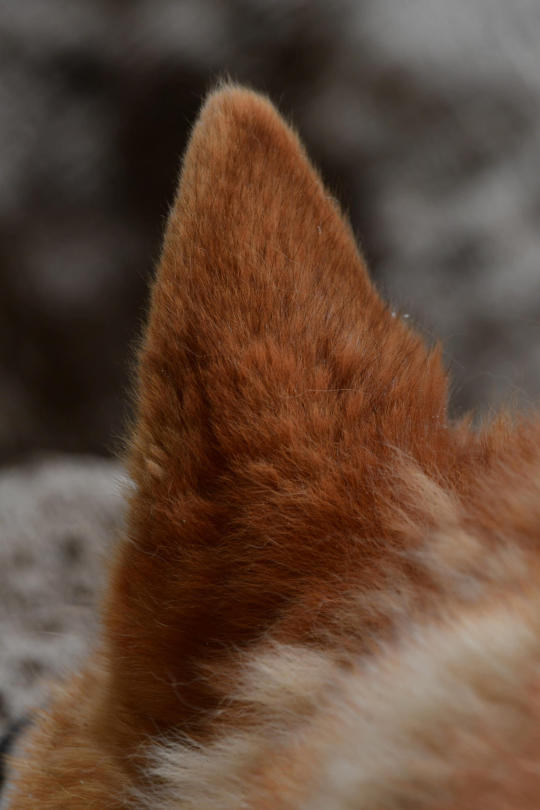
8 notes
·
View notes
Text
While ginger dingoes are the most common, dingoes come in a range of colours! A 2021 UNSW study found that “53 per cent of dingoes have a ginger coat colour, 9 per cent were sable, 11 per cent black and tan, 14 per cent brindle, 5 per cent black, 1 per cent white and 6 per cent were patchy (white with spots of ginger or black).” That study also found that coat colour isn’t always indicative of dog hybridisation.

[Image description: A collection of photos of dingoes. Starting from the top left:
A sable dingo.
A ginger dingo with a black saddle.
A ginger dingo with white points.
A black and tan dingo.
A ginger dingo next to a dark brown puppy.
A ginger dingo with a white underbelly.
A ginger dingo standing next to a brown dingo.
A white dingo with a brown face. Its colours looks very similar to a dog.
A white dingo.
A white dingo with brown patches. Its colouration looks very dog-like.
A brindle dingo.
A brindle dingo with a more ginger tinge.
End ID]
Canis dingo, or maybe Canis lupus dingo, or maybe Canis familiaris dingo
Some researchers think dingoes are an ancient breed of domesticated dogs brought to Australia around 4,000 years ago by Asian seafarers. Others think they are a distinct species closely related to grey wolves and domestic dogs, similar to coyotes and jackals.
Either way, dingoes are very closely related to wolves and domestic dogs and are able to interbreed with them. Most dingoes in Australia now are mixed with many different dog breeds. One of these dingo-dog hybrids is the Australian cattle dog, which is a pretty popular dog breed used for herding cattle.
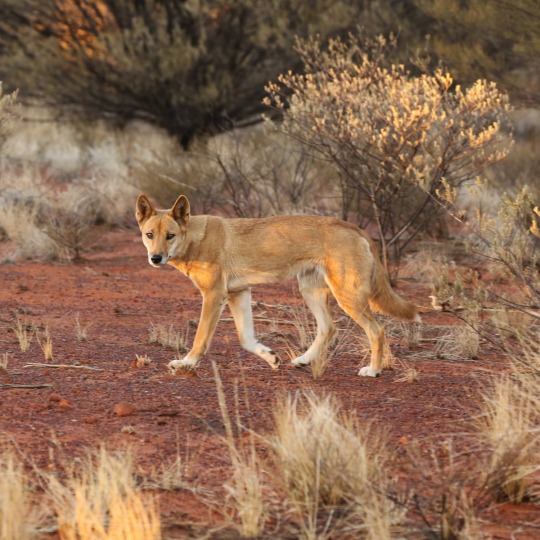
Dingoes are found in every state of Australia except for Tasmania. The dingo’s relative, the New Guinea singing dog, is also found in the mountains of New Guinea. Named for their unique yodeling howls, singing dogs are one of the most endangered canines in the world. They were believed to be extinct in the wild until a small population was found two years ago.

Those that live in the high Alpine habitats of southeast Australia are known as Alpine dingoes. They are often lighter in color and grow thicker coats than those that live in desert or forest habitats. Desert dingoes that live in northern Australia are the typical bright orange color. They are larger than other dingoes, generally weighing around 40 pounds (18 kg) with some reaching over 50 pounds (22.7 kg). There are dingoes that live in forests and have dark tan or black fur, but they are most likely not purebred.
Fraser Island off the east coast of Australia is home to around 200 dingoes. With no pet dogs on the Island, they are purebred. Fraser Island and Alpine dingoes are possibly the last populations that are not mixed with domestic dogs.
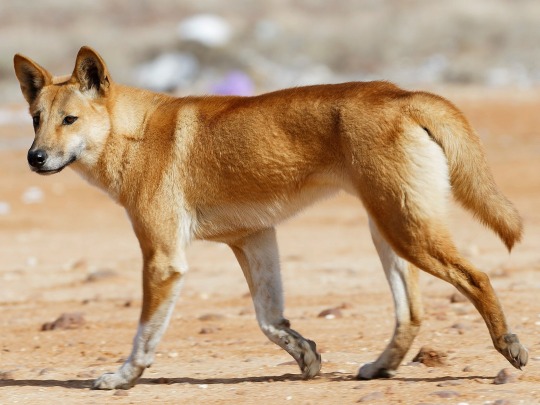
Often living in packs of up to 12 individuals, dingoes are very social. The dominant male and female of these packs are the parents of all the others. They rarely bark to communicate with each other, instead using a variety of howls.
In areas with small prey like hares, rodents, and reptiles, dingoes generally hunt alone. They still might live in packs, but they only rest and play with each other. In areas with larger prey like kangaroos and sheep, they hunt as a pack. Their tendency to hunt sheep causes farmers to target them, so the dingo population is classified by some as vulnerable but by others as endangered due to poisoning, trapping, and shooting.
Dingoes hunt by ganging up on larger prey with multiple pack members or by scaring small prey out of thickets and then pouncing. They are very flexible so they can follow prey into tight spaces. Like a cat, if a dingo’s head can fit through something, its whole body can.
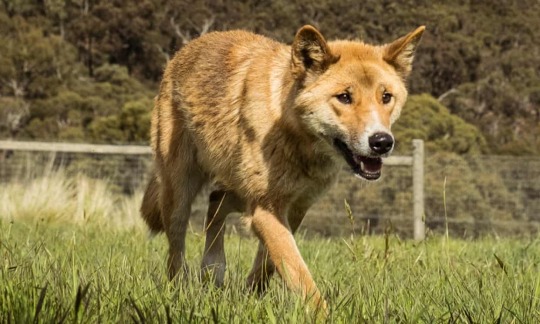
Wandi ^
I would also like to mention Wandi, who is a very good dingo. He was dropped by an eagle into a backyard when he was 5 weeks old. It was discovered soon after that he was a rare alpine dingo, so he went to live at the Dingo Discovery Sanctuary and Research Centre. He’s helping protect the species and he even has his own Instagram account.
I rate the dingo 17/10. A very Australian animal
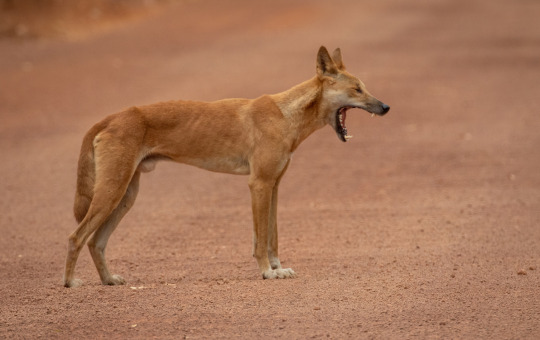
Photo credits:
(1) Jamie Lamb (2) Michelle J Photography (3) Michael Hains (4) Christopher Hopkins (5) tanyahattingh
#described#described in post#dogdescription#undescribed#dingoes#canis lupus dingo#canis familiaris dingo#dingo#canis dingo#dogreblog
310 notes
·
View notes
Text
girls lemme tell you a science secret... a lot of taxonomy is based off pure vibes
#upd8#biologie#is it Canis lupus dingo or Canis familiaris dingo!?!? make up ur minds!#also are termites Isoptera or Blattodea...? aaah BRAIN HURT
1 note
·
View note
Text

🏞️🐾🦴wolf study 🪵🌲🥩

hello creechers im a wolf otherlink (or idk yet rlly) so i've compiled like everything about wolves and i might add to it sometimes but heres the contents:
basic (size, diet, status ect)
species and subspecies
pack anatomy
communication
-vocal, body, facial, scent,
-submissive behaviour
-playing
fandom facts

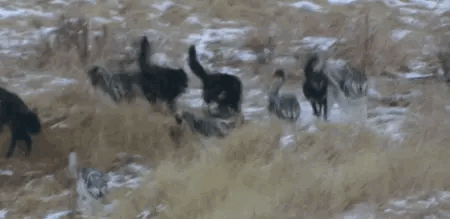
basic information 🥩
scientific name: canis lupus
lifespan: 13 years (wild)
diet: carnivorous -
size: 80-85cm 30-80kg
conservation status: least concern
species and subspecies 🍖
its a big debate on how many species of wolf there are in the wolf but the 2 main ones are the grey and red wolf then all the subspecies evolved in different way based on their habitat but they all descended from grey and red wolves
subspecies: (38) WIP 🚧
arctic: usually all white with black nose and ears
Eurasian: a brown-red colour
eastern: a darker coloured wolf
northwestern: a grey wolf with more black
northern rocky mountains: more pale fur
Indian: brown-grey
Mexican: browny-black
great plains: light grey
British Columbia: all black
Vancouver sea: light grey on top black on the side
Italian: dark brown
Arabian: dark brown and black
canis lupus dingo: light brown
Iberian: darker not a lot of white
interior alaskan: mostly black with some white
alexander archipelago: all black
tundra: mostly white with a bit of black on top
texas: coyote colours
alaskan tundra: all white
Manitoba: dark grey
labrador: dark grey to mostly white
baffin island: mostly white
Greenland: all white
Mackenzie: white-yellowish
mongolian: light brown light grey
steppe: coyote colours
new guinea singing dog: red-brown
Egyptian: jackal colours (blueish)
tibetan: light brown to whiter
Austro-Hungarian: very dark grey
extinct subspecies
Hokkaido: all grey
Japanese: they are patterned
mogollon mountain:
Florida black: all black
kenai peninsula: dark grey
Newfoundland:
cascade mountain:
gregorys:
sicilian:
canis lupus youngi:
bernards:
pack anatomy 🌲
packs can consist of 6-20 members though the average is thought to be around 10
there is usually 2 main wolves, sometimes known as alphas but that terms outdated, these are usually the main parents and give birth to most of the pack
a litter usually consists of 4-6 pups and they are all born blind and vulnerable and they usually stay in the den and with their mother for about 2 years
older siblings have been known to look after younger siblings if needed
the packs social bond is very strong and have fierce devotion to their pack. they have been known to mourn loss, which is what a lone howl usually is, they have also been seen to sacrifice themselves for their pack
(WIP) 🚧
communication 🦴

vocalisation:
every pack as its own unique howl to distinguish different packs and if they are on someone else's territory
a defensive howl is to keep the pack together and keep predators out of their territory
a social howl is to locate one another
barking, though rare, is used as a warning for example a mother wolf may bark of she senses danger around her pups
whimpering and whining can indicate a "i give up/in"
growling is also used as a warning but for more dominance like protecting their territory
body language and posture:
a wolf interacting with it pack can say lots about the status of the wolf and the pack
less dominant wolves usually crouch to make themselves look more smaller
they also lick the muzzles of more dominant wolves
slinking is another "i give in" and is a more submissive behaviour and is show in fights and disagreements with the pack
dominant wolves usually have a more confident upright posture to show said dominance
they also rest their head on submissive wolves neck or back
facial expressions:
when angry their ears stick upright and they bear their teeth for example when two wolves have a disagreement they will show this and growl
when suspicious they squint their eyes and put their ears back
when in fear they flatten their ears
when they want to play they display the play bow and dance around
as a warning they will curl the end of their lips displaying a bit of teeth
when relaxed their eyes are just on their sides
tail position:
tail tucking is a sign of being in fear and submission
a more dominant tail position is sticking it out and slightly upward
a neutral tail position is wagging
scent marking
they mark their territory with pheromones
these pheromones come out from glands on the toes, tail, eyes, skin and genitalia
they mark territory with urine and scat (i will not be doing this)
they have also been known to mark food
submission:
there are 2 types of submission: active and passive
active submission: is where a wolf shows signs of inferiority like tail tucking, muzzle licking and crouching (pups do this with adults)
passive submission: passive submissions is when a wolf lays on its back or side displaying the stomach or chest which is a vulnerable part of the body because it contains vital organs it is show to more dominant wolves when they get into a disagreement the less dominant one usually gives up and shows passive submission to show the others authority
playing:
they are known to get zoomies like how domestic dogs do
some games they play include: chase, tug of war or jaw sparring
jaw sparring is when two wolves will rear up on their hind legs and use their front paws and jaws
a range of vocals come out when playing this this fortifies bonds and status and shows physical skills
a more casual version of this is then laying down

facts + misconceptions 🌕
they have 42 teeth
they have 4 toes with claws and run on their toes not their pads
despite running on their toes they can run at 16-38 miles per hour
they can swim up to 8 miles
they have 200 million scent cells
they can eat 20 pounds of meat in one meal
they don't howl at the moon that was a myth people thought because of werewolves their howls are actually just more clear at night because there is usually less wind and other sound
alpha, beta, omega ect roles don't actually exist there is just more dominant wolves and less dominant wolves the alpha is usually just the parent but there is a social hierarchy in packs
wolves don't hibernate at all so they can be seen all year around
the biggest pack ever consisted of 400 wolves which was found in the outskirts of the woods in russia (i made a post abt then when i got 400 followers)
wolves have their own unique personality
northern rocky mountain wolves are one of the biggest subspecies

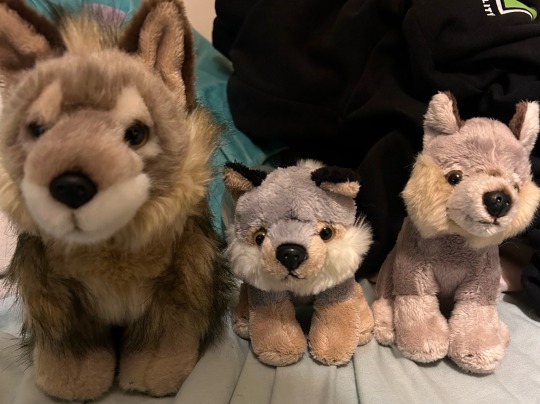
this is my pack so far :3 ✨ idk why im adding this i rlly like wolps at the minute and im going to get more ^^

#🍀luckys journal.txt#☘️clover wolps#🦮fact sheets.txt#alterhuman#alterhuman community#alterhumanity#therianthropy#therian community#lycanthrope#quadrobics#lycanthropy#dog therian#dogkin#wolf otherkin#wolf theriotype#wolf kin#wolf therian#wolfkin#canine theriotype#canine cladotherian#canine therian#caninekin#canine kin#dog theriotype#dog kin#otherlink#therian#nonhuman community#nonhuman#physical nonhuman
102 notes
·
View notes
Text
My thoughts of the new Minecraft wolf variants!
With the recent announcement of the new wolf variants, I wanted to give my two bits about what real life animal each of the variants are based on! (I study animal ecology so I get excited when animals are depicted in anywhere)
The Pale Wolf, Black Wolf, Snowy Wolf, Ashen Wolf, and Woods Wolf
All of these wolf variants are based on the Grey Wolf (Canis lupus), whether it be the typical Plains Wolf (Canis lupus nubilus), or a different subspecies. The Grey Wolf is the most common wolf species found on the world, typically lives in packs of 4-9 members, and typically has 5 accepted subspecies in the science community - but in total has over 30 subspecies (determining subspecies can be tricky).
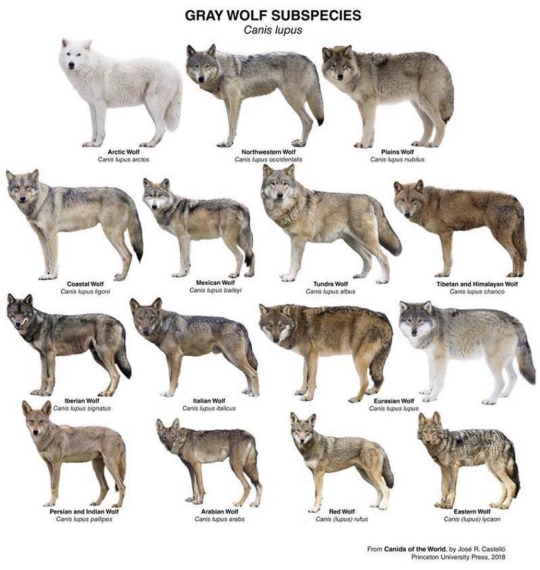
The Pale Wolf is specifically meant to represent a Plains Wolf, as this design has been representing the Grey Wolf in Minecraft for at least 12 years. The Taiga biome is one of the biomes where Grey Wolves can be found, making it a great place to find Pale Wolves in Minecraft.

The Black Wolf is not a subspecies, but rather a color variant of the Gray Wolf. The black coloring of their coats is not typically caused by melanism, but rather is a normal gene found in Grey Wolves. One of the causes of wolves having a black coat is due to the black gene being linked to higher immunity to canine distemper, meaning the black wolves that survive the virus are able to reproduce and pass on their black genes. Does this mean distemper exists in Minecraft? Probably not, but that's up to your interpretation.

The Snowy Wolf is based on the Arctic Wolf (Canis lupus arctos). Artic wolves' white coats help them blend into the snow to help them hunt prey, and to hide them from potential predators.
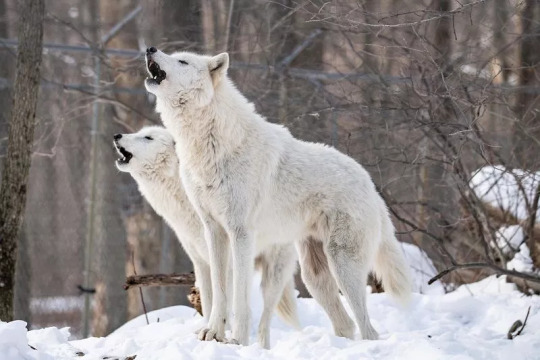
The Ashen Wolf is likely based on the Eurasian Wolf (Canis lupus lupus). The Eurasian wolf can have similar coloring to the plains wolf, but has also been found with greyer coloring along its back, tail, and upper legs and face, and with white on its cheeks, underbelly and lower legs.
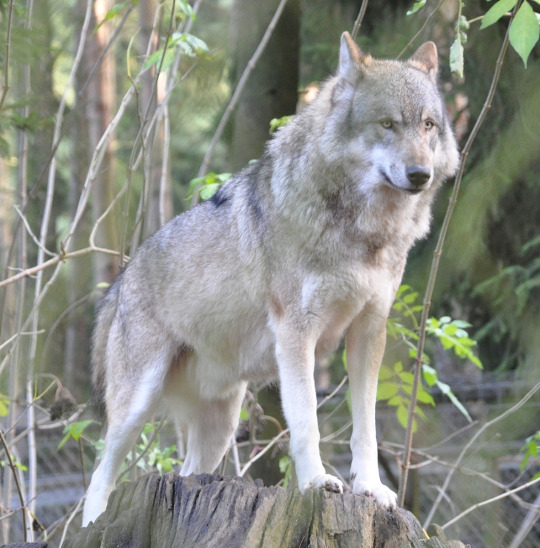
I think that the Woods Wolf is based on the Tibetan/Himalayan Wolf (Canis lupus chanco). It was a challenge to find what subspecies the woods wolf was based on because most wolves don't have the deep brown-orange coloring seen on the woods wolf, but the Tibetan/Himalayan wolf can often be seen with these colorings in the wild.
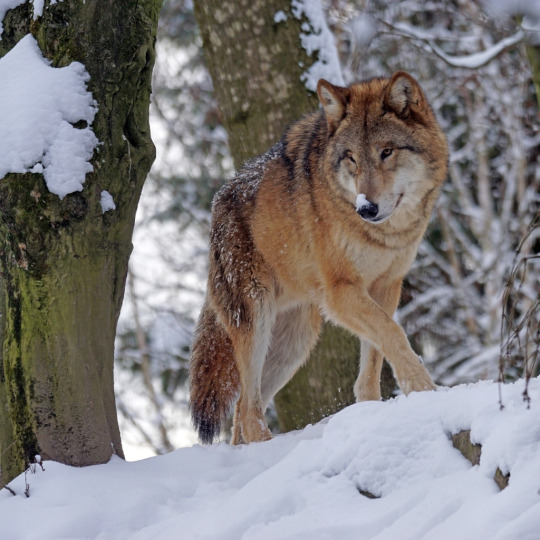
The Rusty Wolf
The Rusty Wolf is based on the Dhole (Cuon alpinus), also known as the Asiatic Wild Dog. Dholes have a rich tawny coat with a rich chocolatey tail. Unlike another popular red canine (the dingo), Dholes live in tropic forests, rainforests, and other habitats, making it an appropriate fit to be the jungle dwelling rusty wolf.
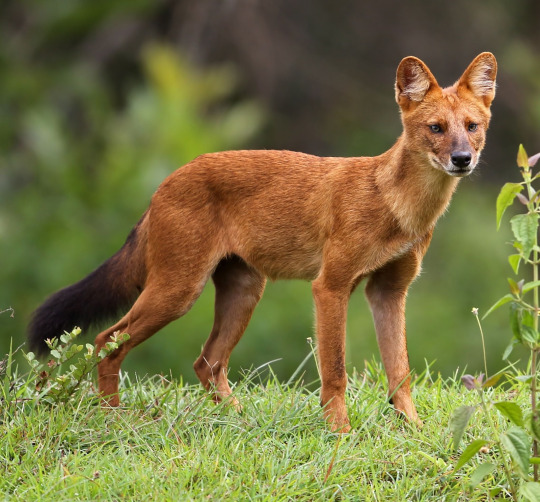
The Spotted Wolf
The Spotted Wolf is based on the African Wild Dog (Lycaon pictus), also known as the Painted Dog or the Cape Hunting Dog. This is variant is my favorite of the variants, and is one of my favorite canines of all time. African wild dogs live in savannah and grasslands biomes irl, and have beautiful coats ranging in different patterns of tawny, black, and white. I don't know if this is possible for Minecraft mechanics, but hopefully the spotted wolves will have different coat variants like their irl counterparts.

The Striped Wolf
The Striped Wolf is based on the Aardwolf (Proteles cristata), which is a species of hyena, making them felids instead of canids! (Yes, hyenas are more closely related to cats than dogs). Aardwolves can be found in semi-arid and open plains, making the badlands a good place to find them in-game. Fun fact! Aardwolves mainly eat termites/ants. Hopefully the striped wolf won't starve in a "bugless" game (rip fireflies).

The Chestnut Wolf
This one frustrates me. I couldn't find a canine or canine adjacent animal that had even a similar coat pattern. This is not a wolf. It is a dog. Probably a Norwegian Elkhound.

#minecraft#minecraft wolf#minecraft wolves#wolf#wolves#grey wolf#dhole#african wild dog#aardwolf#norwegian elkhound#zoology#animal ecology
86 notes
·
View notes
Text
As an autistic person I have a little bit of a love/hate relationship with the type of comedy on tumblr where people say something that is not true and proclaim it to be true, of course under the expectation that everyone is being a little silly and not taking it too seriously.
One good example I just saw is a post going around with people arguing about whether or not foxes are dogs. (Generally, only animals part of the species Canis Lupus are considered dogs; so that is most wolves, domestic dogs, and dingoes). They were claiming that foxes are dogs because they’re fluffye. And once I processed that it was a joke, it was funny! Haha, yes, foxes are indeed fluffye and appear similar to dogs. BUT before I realised it was a joke it was really confusing, and I feel like part of the joke is actually at the expense of people who don’t get the joke, initially or at all. Which, yeah, not everyone who doesn’t get the joke is autistic, but isn’t it kinda ableist to make jokes at the expense of people who aren’t understanding sarcasm?
It reminds me a little bit of the issues with Goncharov. Yes the joke was funny, I actually rly liked it lol, but what wasn’t funny was people refusing to tag it as unreality because it “ruined the joke” or something. It is an accessibility issue; if you refuse to tag something because a disabled person might have difficulty with it, then yeah, you’re being ableist.
So anyway this is me asking people to please tag extended jokes like the fox one I mentioned (another example might be the smooth sharks one) as sarcasm, or otherwise try to make it clear it’s a joke somehow. Making it clear it’s a joke shouldn’t ruin it, just make it more accessible.
(And if tagging it as sarcasm did ruin the joke because people stopped arguing, then maybe the joke is itself just kinda ableist since the whole premise of it relies on people who miss the joke misinterpreting the post?)
9 notes
·
View notes
Note
Hello ! I just went down a long rabbithole on your blog and it is fascinating, i love learning from people passionate who know about their subject ! :D
I saw a post in august 2022 where you werent sure what define a specie, and as a biologist i'm happy to help !
A specie, commonly, is "a group of animals who could have a fertile child together, and who could meet in nature". (for example polar bear and grizzly can have a fertile kid but they dont live near eachother). Then it gets incredibly muddled, lot of debate happen, and it's not even getting into bacterial species, but that is the crux of it.
And, biology fun fact : the specie "dog" is a wolf ! It's just the domesticated form of it, like pigs are the domesticated form of hogs. It's like, if you only took the pigeons with the bluest feathers, the roundest eyes and the shortest beaks, and only made them reproduce eachother, then only took the children with the most pronounced characteristics and bred them, and so on and so on until you have, in like 50 years, a pen filled exclusively with blue birds with big round eyes and short beaks (and maybe a weird characteristic you didnt intend to have but is somehow genetically linked, like for example, now half your birds have super vibrant orange feet even tho you didnt ask for it). And you name your birds the "Pigey" and everyone want to have one in their home.
The pigey are still pigeons, and the two could breed together. It's just a sub-group of pigeons who lost the genetic variation pigeons have in nature : they lost normal genes for, say, feather coloration, and now exclusively have only one, pushed to the extreme.
It's the same with dogs ! They are a sub-group of wolfs, they are both the specie Canis Lupus ! And "dogs who went wild again", like dingos, are the same specie. (Arctic wolves are also the same specie i think)
Orher Canis species include Canis rufus (red wolf), Canis simensis (Ethiopian wolf), about five or ten others, and then Canis letrans, the coyote ! It can fully breed with wolves, but since coyotes live in plains and wolves in forests, plus the fact they both live in packs and are fairly territorials, they usually dont meet. The same goes with Canis aureus (golden jackal).
Now: if you kept your pigeys separate on an island, with no contact with pigeons, for thousands and thousands of years, they could start to change so much that they would become too weird to breed with natural pigeons : for example, their genitals stop being compatibles with normal pigeons, or their mating rituals would put off pigeons, or more often, they become genetically incompatible (they could loose or gain some chromosomes so they no longer have the same number as normal pigeons). They would then be different species ! In fact that's how species tend to form :D Wolves and dogs are not different enought yet !
I hope i didnt bore you with all this biology, and have a great day !
Hey there! Don’t worry, you didn’t bore me, I love hearing people get excited about stuff!
I think I remember which post your talking about, and I think my answer to the ask was a bit similar to what you said though I was hesitant to get too into the definition because I know there’s some controversy on what defines a species (plus general biology isn’t my strong suit, as I tend to stick with canines). And then there’s the whole chromosomal difference (like how foxes and wolves can’t breed because the number of chromosomes they have is too far off) that comes into play and I’m like ???.
And yeah, Arctic wolves are indeed a subspecies of gray wolf. I also saw an article somewhere (maybe on the IWC site) describing how it was a possibility that dogs may not be directly descended from wolves like we thought as the possible second domestication of dogs comes into play, but I’d have to fact check it. All in all, very cool and I could read about canines all day if you can’t tell.
#I remember hearing a very similar example to what you explained in an old class of mine#and then everything clicked and I was like oooooooh#that makes sense#I love genetics and they’re so cool but some of them I wouldn’t touch with a ten foot pole#snake genetics? there’s so much I just get overwhelmed#ask
9 notes
·
View notes
Note
The wolf, also known as the gray wolf or grey wolf, is a large canine native to Eurasia and North America. More than thirty subspecies of Canis lupus have been recognized, including the dog and dingo, though gray wolves, as popularly understood, only comprise naturally-occurring wild subspecies.
hi inky
3 notes
·
View notes
Note
I for real didn't know a dingo was a dog ;*;.
IT'S OKAY LMAO (unexplodes you with my mind). It's actually a preeeetty contested thing, taxonomically, whether dingoes are just feral dogs (Canis familiaris), whether they're distinct enough to be a subspecies of dogs (Canis familiaris dingo), or their own thing entirely (Canis dingo), or even a subspecies of wolves (Canis lupus dingo). I, for one, belong to the first two camps, it's either just a dog or a subspecies of a dog. They're extremely old, they split pretty early from domestic dogs, but there's historical record of some populations being domesticated, they can still become domesticated in a way that wolves cannot, and in general have a relationship with humans that's closer to feral dog status than, like, full wolf status. I am not a scientist btw I'm some idiot with a blog and a love for Wikipedia and probably some kind of autism so don't take MY word for it, but prettyyyy common consensus is that they're doggies
#this might be the most sniper kinnie thing i've ever posted aside from the time i told my friends#that i go on wikipedia to watch alligator videos for fun#ask#anon
6 notes
·
View notes
Text
Species: Wolves (Canis)
This series focuses on helping people choose interesting species for their fursona through informing them of the many, often overlooked, species out there! This post is about wolves.
──── ◉ ────
Species:
Red Wolf (Canis rufus)

Size: 66cm (26in) height (at shoulder), 121cm (4ft) lenght, 20-36kg (45-80lbs)
Diet: carnivorous, preys on deer, small mammals
Habitat: coastal prairies, marshes, forests
Range:

Status: critically endangered/endangered
──── ◉ ────
Eastern Wolf/Timber Wolf (Canis lycaon)

Size: 63-91cm (25-36in) height (at shoulder), 160cm (5.5ft) lenght, 23-30kg (53-67lbs) weight
Diet: carnivorous, preys on deer, large herbivores
Habitat: deciduous forests, coniferous forests, mixed forests
Range (in blue):

Status: imperiled/threatened
──── ◉ ────
Coyote (Canis latrans)
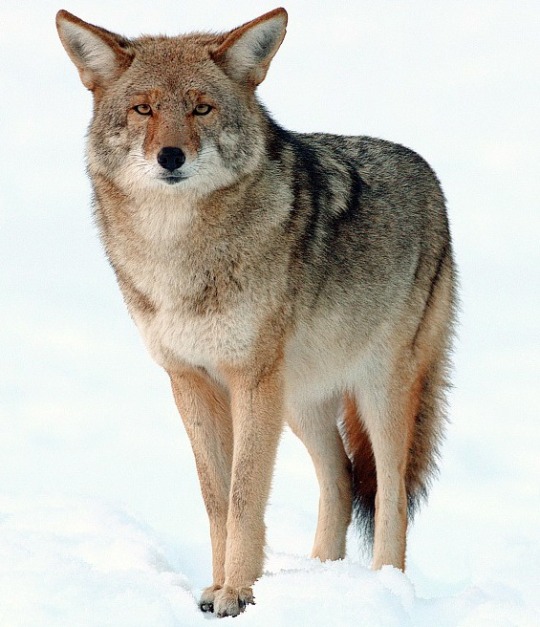
Size: 58-66cm (21-25in) height (at shoulder), 76-86cm (2.4-2.8ft) lenght, 6.8-21kg (14-46lbs) weight
Diet: omnivorous, preys and scavenges small mammals, deer, livestock, insects, carrion, berries
Habitat: varied, sagebrush-steppe, forests, prairies, deserts, savannahs, alpine meadows, temperate ranforests, urban
Range:

Please note, the coyote has 19 subspecies!
They all have small but interesting variation, and can vary in size quite dramatically. If you'd like a coyote fursona, I recommend checking them out! The picture above is of a mountain coyote (Canis latrans lestes)
Status: least concern
──── ◉ ────
Grey Wolf (Canis lupus)

Size: 80-85cm (31-33in) height (at shoulder), 100-160cm (3.2-5.2ft) length, 23-80kg (50-176lbs) weight
Diet: carnivorous, preys on large ungulates, small mammals
Habitat: varied, temperate forests, mountains, tundra, taiga, grasslands, deserts
Range:

Please note, the grey wolf has 38 subspecies (the above pictured being eurasian wolf, Canis lupus lupus)!
Of which I would like to highlight:
Arabian Wolf (Canis lupus arabs)

Arctic Wolf (Canis lupus arctos)
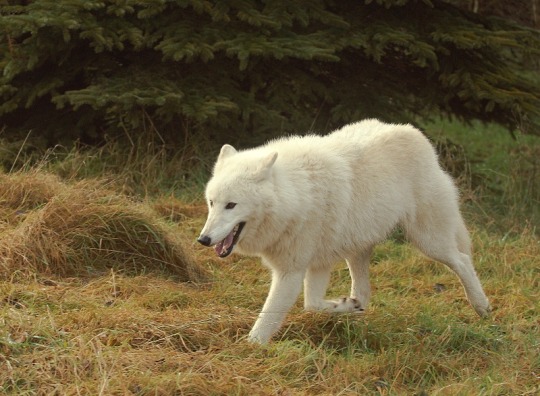
Mexican Wolf (Canis lupus baileyi)

Also, please note the grey wolf comes in a variety of colors, regardless of subspecies
Status: least concern
──── ◉ ────
Dingo (Canis dingo)

Size: 52-60cm (20-23in) height (at shoulder), 120-150cm (3.9-4.9ft) lenght, 10-15kg (22-33 lbs) weight
Diet: carnivorous, preys on small mammals, livestock
Habitat: varied, spanning all if Australia
Range:
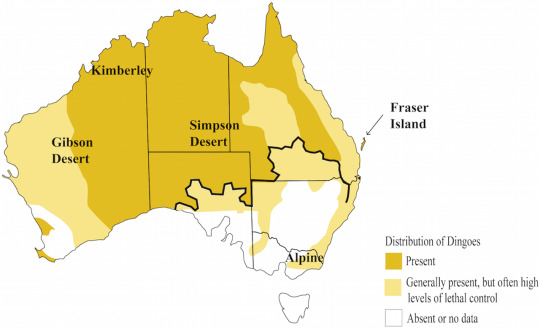
Please note, the dingo's taxonomic classification is debated - you may find it also listed as Canis familiaris, Canis familiaris dingo, or Canis lupus dingo
Status: threatened
──── ◉ ────
African Wolf/Golden Wolf (Canis lupaster)

Size: 40cm (15in) height, 7-15kg (14-33lbs) weight
Diet: Carnivorous, preys on small mammals, small reptiles, ground-nesting birds, insects
Habitat: mediterranean, scrublands, forests, savannahs
Range:
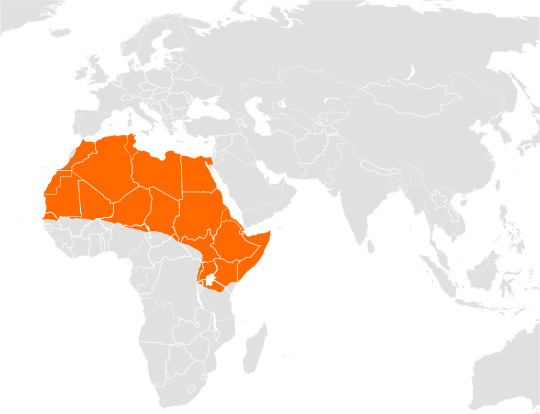
Please note! The african wolf has 6 subspecies!
Status: least concern
──── ◉ ────
Ethiopian Wolf (Canis simensis)
The Ethiopian wolf has 2 subspecies:
Northern Ethiopian Wolf (Canis simensis simensis)

Southern Ethiopian Wolf (Canis simensis citernii)

Size: 53-61cm (20-24in) height (at shoulder), 100cm (3.2ft) lenght, 11-20kg (24-44lbs) weight
Diet: carnivorous, preys on small mammals
Habitat: afroalpine grasslands, heathlands
Range:

Status: threatened
──── ◉ ────
Golden Jackal (Canis aureus)
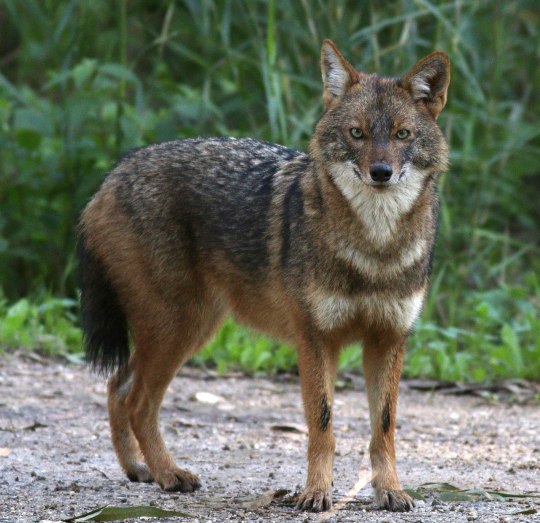
Size: 46-51cm (18-20in) height (at shoulder), 69-84cm (27-33in) lenght, 8-11kg (18-24lbs) weight
Diet: omnivorous, preys and scavenges small mammals, small reptiles, ground birds, fish, insects, fruit
Habitat: open savannahs, deserts, arid grasslands
Range:

Please note! The golden jackal has 7 subspecies!
Status: least concern
──── ◉ ────
#fursona resources#species#furry#fursona#mammals#canidae#canids#canis#wolf#wolves#red wolf#timber wolf#coyote#grey wolf#dingo#african wolf#ethiopian wolf#golden jackal
7 notes
·
View notes
Text
idk if PT fandom came with an Animal AU so here's mine lol
Peppino - grey white tabby cat
Gustavo - canis lupus dingo dog
Pepperman - Panther
Viligante - red fox
Noise and Noisette - Rabbits
Fake Peppino - the same as Peppino but with some details in
Pizzaface - soem kind of pizza dragon
Pizzahead - Cat
Mr. Stick - raccoon
5 notes
·
View notes
Photo
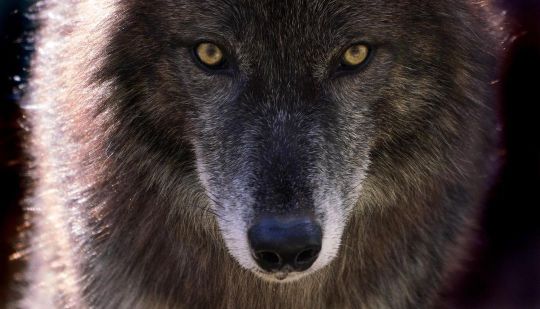
Two gray wolves (Canis lupus) photographed at Bush Gardens. The wolf is the largest member of the Canidae (dog) family, with a range extending through Alaska and parts of Michigan, Wisconsin, Montana, Idaho, Oregon, and Wyoming. Gray wolves share their ancestry with domestic dogs, coyotes, and wild dogs such as dingoes. Scientists consider the gray wolf to be the species from which most other wolf subspecies evolved. Gray wolves are know as a keystone species. After they disappeared from Yellowstone, the size of the park’s elk population exploded. The elk ate many plants, especially young seedlings and willows, growing along the rivers. Normally, the roots of these plants help hold the soil in place. So the dramatic decrease in these plants led to erosion along the riverbanks, which destroyed habitats for animals like beavers and songbirds. Biologists in Yellowstone began exploring the idea of bringing Canadian wolves to the park and on January 12, 1995 the first eight wolves arrived from Jasper National Park in Alberta, Canada. In the years that followed, wolves brought the elk population down and protected the open valleys from overgrazing. However, the number of elk killed was double than estimated and many local hunters stirred controversy by protesting that the wolves will end up killing all of the elk. Today the debate is still strong, according to thoughtco.com, nwf.org and yellowstone.com. @jaypaulphoto #graywolf #wolf @buschgardensunofficial (at Bush Gardens) https://www.instagram.com/p/Cpyl3RjuV-XVJG9XDQVxBQpt5wQAe8KRttXfBI0/?igshid=NGJjMDIxMWI=
4 notes
·
View notes
Text
Tigre-da-Tasmânia
O lobo-da-tasmânia[12][13][14][15] (nome científico: Thylacinus cynocephalus), conhecido em outras línguas como tigre-da-tasmânia,[16][17] foi o maior marsupial carnívoro dos tempos modernos. Nativo da Austrália e Nova Guiné, acredita-se que foi extinto no século XX.[3] Foi o último membro de seu gênero, Thylacinus (tilacino), ainda que diversas espécies relacionadas tenham sido encontradas em registros de fósseis do início do Mioceno.
Domínio: Eukaryota
Reino: Animalia
Filo: Chordata
Classe: Mammalia
Infraclasse: Marsupialia
Ordem: Dasyuromorphia
Família: †Thylacinidae
Gênero: †Thylacinus
Espécies: †T. cynocephalus
Os tigres-da-tasmânia foram extintos da Austrália continental milhares de anos antes da colonização europeia do continente, mas sobreviveram na ilha da Tasmânia junto com diversas espécies endêmicas, incluindo o diabo-da-tasmânia. A caça intensiva encorajada por recompensas por os considerarem uma ameaça aos rebanhos é geralmente culpada por sua extinção, mas outros fatores que contribuíram podem ter sido doenças, a introdução de cães, dingos e a ocupação humana de seu habitat. O último registro visual da espécie ocorreu em 1932 e o último exemplar morreu no Zoológico de Hobart em 7 de setembro de 1936. Apesar de ser oficialmente classificado como extinto, relatos de encontros ainda são reportados.
Vídeo do último tigre-da-tasmânia
Como os tigres e lobos do hemisfério norte, dos quais herdou dois de seus nomes comuns, o lobo-da-tasmânia era o superpredador da cadeia alimentar. Como um marsupial, não era relacionado a estes mamíferos placentários, mas devido a convergência evolutiva, ele demonstrava as mesmas formas gerais e adaptações. Seus parentes mais próximos são o diabo-da-tasmânia e o canguru.
O tigre-da-tasmânia era um dos dois únicos marsupiais a terem um marsúpio em ambos os sexos (o outro é a cuíca-d'água). O macho tinha uma bolsa que agia como um revestimento protetor, protegendo os órgãos externos do animal enquanto este corria através de mata fechada.
Evolução

Ilustração do Thylacinus potens, que significa Poderoso lobo-da-tasmânia, o qual existiu durante o Mioceno. É o maior parente conhecido do lobo-da-tasmânia
O tigre-da-tasmânia moderno apareceu pela primeira vez há cerca de 4 milhões de anos. As espécies da família Thylacinidae remontam ao início do Mioceno; desde o começo dos anos 90, pelo menos sete espécies de fósseis foram descobertas em Riversleigh, parte do Lawn Hill National Park ao noroeste de Queensland.[18][19] O Nimbacinus dicksoni é a mais antiga das sete espécies de fósseis descobertas, tendo sido datada em 23 milhões de anos. Este lobo-da-tasmânia era muito menor do que o seu parente mais recente.[20] A maior espécie, o Thylacinus potens, que atingia o tamanho de um lobo, foi a única espécie a sobreviver durante a parte final do Mioceno.[21] Na parte final do Pleistoceno e inicial do Holoceno, o lobo-da-tasmânia moderno espalhou-se (embora nunca numeroso) por toda a Austrália e Nova Guiné.[22]

Os crânios do lobo-da-tasmânia (esquerda) e do lobo-cinzento, Canis lupus, são quase idênticos, embora as espécies não sejam parentes. Estudos mostram que a forma do crânio da raposa-vermelha, Vulpes vulpes, é ainda mais próxima à do lobo-da-tasmânia.[23]
O lobo-da-tasmânia apresentava muitas semelhanças com os membros da família Canidae (cão) do Hemisfério Norte: dentes afiados, mandíbulas poderosas, digitígrados e a mesma forma geral do corpo. Este é um exemplo de evolução convergente. Uma vez que o lobo-da-tasmânia ocupou o mesmo nicho ecológico na Austrália como a família do cão fez noutras regiões, desenvolveram muitas características idênticas. Apesar disso, esta espécie não está relacionada com qualquer dos predadores do hemisfério norte.[24]
É fácil diferenciá-los de um cão verdadeiro devido às listras nas costas, embora o esqueleto seja de difícil distinção. Estudantes de zoologia em Oxford tiveram que identificar 100 espécimes zoológicas como parte de seu exame final. Logo se espalhou o boato de que, se um crânio de 'cão' fosse apresentado, seria seguro identificá-lo como um Thylacinus sob o argumento de que qualquer coisa tão óbvia quanto um crânio canino teria de ser um truque. Então certo ano os examinadores, por conta própria, repetiram o embuste e apresentaram um crânio de cão verdadeiro. A maneira mais fácil de distingui-los é pelos dois buracos proeminentes no palato, característico dos marsupiais em geral.
– Richard Dawkins, The Ancestor's Tale
Extinção

Um lobo-da-tasmânia caçado, 1869
Extinção da Austrália continental
O lobo-da-tasmânia provavelmente foi extinto da Austrália continental há cerca de 2 000 anos, e possivelmente antes disso na Nova Guiné.[59][60] A extinção é atribuída à competição com os humanos indígenas e os invasores dingos. Dúvidas existem quanto ao impacto do dingo, entretanto, uma vez que as duas espécies não teriam estado em competição direta uma com a outra. O dingo é um predador primariamente diurno, enquanto especula-se que o lobo-da-tasmânia caçava na maioria das vezes à noite. Em adição, o lobo-da-tasmânia possuía uma estrutura mais poderosa, o que lhe teria dado uma vantagem em encontros cara a cara.[61] Entretanto, recentes examinações morfológicas de esqueletos do dingo e do lobo-da-tasmânia mostram que apesar de o dingo possuir uma mordida mais fraca, seu esqueleto podia resistir pressões maiores, permitindo-lhe abater presas maiores do que o lobo-da-tasmânia podia. O lobo-da-tasmânia era também muito menos versátil na dieta que o onívoro dingo.[62] Seus ambientes claramente se sobrepunham: restos sub-fósseis do lobo-da-tasmânia foram descobertos em proximidade àqueles de dingos. A adoção do dingo como um companheiro de caça pelos povos indígenas teria colocado o lobo-da-tasmânia sob crescente pressão.[22]
Pinturas rochosas do Parque Nacional Kakadu claramente mostram que lobos-da-tasmânia foram caçados pelos antigos humanos.[63]

Esta foto de 1921 por Henry Burrell de um lobo-da-tasmânia com uma galinha foi amplamente distribuída e pode ter ajudado a fortalecer a reputação do animal como um ladrão de aves.
Na verdade, a imagem foi cortada para esconder um cercado e uma casa, e uma análise por um pesquisador concluiu que este lobo-da-tasmânia é um espécime empalhado, posado para a câmera.[64]
Extinção na Tasmânia
Apesar de há muito tempo extinto na Austrália continental na época que os colonizadores europeus chegaram, o lobo-da-tasmânia sobreviveu até a década de 1930 na Tasmânia. Na época do primeiro assentamento, as distribuições mais pesadas estavam nas regiões centrais nordeste, noroeste e norte.[46] Nos primeiros dias do assentamento europeu, eles eram raramente vistos, mas lentamente começaram a receber crédito por diversos ataques à ovelhas. Isto levou ao estabelecimento de esquemas de recompensas em uma tentativa de controlar sua população. A Van Diemen's Land Company introduziu recompensas por lobo-da-tasmânia desde 1830, e entre 1888 e 1909 o governo da Tasmânia pagou 1 Libra esterlina por cabeça do animal (10 shillings para filhotes). No total, pagaram 2 184 recompensas, mas acredita-se que o número de lobos-da-tasmânia mortos tenha sido muito maior do que os reivindicados.[40] Sua extinção é popularmente atribuída a estes esforços rígidos por fazendeiros e caçadores de recompensas.[40] Porém, é possível que múltiplos fatores levaram ao seu declínio e eventual extinção, incluindo competição com cachorros selvagens (introduzidos pelos colonos),[65] erosão do habitat, a extinção coexistente das espécies de suas presas, e uma doença parecida com a cinomose, que também afetou muitos espécimes em cativeiro na época.[35][66]
Seja qual for a razão, o animal havia se tornado extremamente raro na natureza ao final da década de 1920. Vários esforços foram realizados para salvar a espécie da extinção. Documentos do comitê de supervisão da Península Wilsons datados de 1908 incluem recomendações para os lobos-da-tasmânia serem reintroduzidos a diversos locais apropriados no continente victoriano. Em 1928, o Comitê Consultivo para a Fauna Nativa da Tasmânia havia recomendado uma reserva para proteger quaisquer lobos-da-tasmânia remanescentes, com locais potenciais de habitat adequado incluindo a área Arthur-Pieman do oeste da Tasmânia.[67]
O último lobo-da-tasmânia conhecido a ser morto foi baleado em 1930, pelo fazendeiro Wilf Batty em Mawbanna, no nordeste do estado. O animal (acreditado ser um macho) havia sido visto nas proximidades das casas de galinhas de Batty por várias semanas.[68]
"Benjamin" e buscas

O último lobo-da-tasmânia fotografado no Zoológico de Hobart (antigo Beaumaris) em 1933. Um saco escrotal não é visível nesta ou em qualquer outra foto tirado ou filmagem, levando a suposição de que "Benjamin" era uma fêmea, mas a existência de uma bolsa escrotal no lobo-da-tasmânia faz com que seja impossível ter certeza
O último lobo-da-tasmânia em cativeiro, mais tarde chamado de "Benjamin" (apesar de seu sexo nunca ter sido confirmado) foi capturado em 1933 e enviado ao Zoológico de Hobart onde viveu por três anos. Frank Darby, que afirma ter sido um guarda no Zoológico de Hobart, sugeriu "Benjamin" como tendo sido o apelido do animal em um artigo de jornal em maio de 1968. Entretanto, não há nenhuma documentação existente que sugere que o animal possuía um apelido, e Alison Reid (curadora de facto do zoológico) e Michael Sharland (agente publicitário do zoológico) negaram que Frank Darby tenha algum dia trabalhado em Hobart ou que o nome Benjamin tenha sido utilizado para o animal. Darby também parece ser a fonte para a afirmação de que o último lobo-da-tasmânia foi um macho; evidências fotográficas sugerem que era uma fêmea.[69][70] Este lobo-da-tasmânia morreu em 7 de setembro de 1936. Acredita-se que tenha morrido como resultado de negligência - trancado para fora de seu local de descanso protegido, foi exposto a uma rara ocorrência de clima extremo tasmaniano: calor extremo durante o dia e temperaturas congelantes durante a noite.[71] Este lobo-da-tasmânia aparece na última filmagem conhecida de um espécime vivo: 62 segundos de filme preto-e-branco mostrando-o andando para trás e para a frente em sua área cercada em um clipe filmado em 1933 pelo naturalista David Fleay.[72][73] O Dia Nacional das Espécies Ameaçadas tem sido comemorado anualmente desde 1996 em 7 de setembro na Austrália, para celebrar a morte do último lobo-da-tasmânia oficialmente documentado.[74]

"Benjamin" bocejando em 1933
Apesar de ter havido um movimento para a conservação exigindo desde 1901 a proteção do lobo-da-tasmânia, motivados em parte pela dificuldade crescente em obter espécimes para coleções no exterior, dificuldades políticas impediram qualquer forma de proteção ser aplicada até 1936. A proteção oficial da espécie pelo governo tasmaniano foi introduzida em 10 de julho de 1936, 59 dias antes do último espécime conhecido morrer em cativeiro.[75]
Os resultados de buscas subsequentes indicaram uma forte possibilidade de sobrevivência da espécie na Tasmânia até à década de 1960. Buscas feitas pelo Dr. Eric Guiler e David Fleay no noroeste da Tasmânia encontraram pegadas e excrementos que podem ter pertencido ao animal, ouviram vocalizações que eram compatíveis com àquelas do lobo-da-tasmânia, e coletaram evidência anedótica de pessoas que supostamente viram o animal. Apesar das buscas, nenhuma evidência conclusiva foi encontrada para indicar a existência continuada na natureza.[24]
O lobo-da-tasmânia possuía o estatuto de espécie ameaçada até 1986. Padrões internacionais afirmam que qualquer animal que não apresente nenhum espécime registrado por 50 anos deve ser declarado extinto. Uma vez que nenhuma prova definitiva da existência do lobo-da-tasmânia foi encontrada desde a morte de "Benjamin" em 1936, se encontrou de acordo com o critério oficial e foi declarado oficialmente extinto pela União Internacional para a Conservação da Natureza.[3] A Convenção sob Comércio Internacional de Espécies Ameaçadas de Fauna e Flora Selvagem (CITES) é mais cautelosa, listando-o como "possivelmente extinto".[76]
Aparições não confirmadas
Apesar do lobo-da-tasmânia ser considerado extinto, muitos acreditam que o animal ainda existe. Aparições são regularmente alegadas na Tasmânia, outras partes da Austrália e até na área da Nova Guiné Ocidental, da Indonésia, próxima da fronteira com Papua-Nova Guiné. A Associação de Pesquisa de Fauna Australiana Rara registrou 3 800 aparições em arquivo na Austrália continental desde a data de extinção em 1936,[77] enquanto o Centro de Pesquisa Animal Misterioso da Austrália registrou 138 até 1998, e o Departamento de Conservação e Gerenciamento de Terras registrou 65 na Austrália Ocidental no mesmo período.[43] Os pesquisadores independentes de lobo-da-tasmânia, Buck e Joan Emburg, da Tasmânia, registraram 360 aparições tasmanianas pós-extinção no século XX e 269 continentais, números compilados de diversas fontes.[78] No continente, as aparições são mais frequentemente registradas no sul de Victoria.[79]
Algumas aparições geraram uma grande quantidade de publicidade. Em 1982, um pesquisador do Serviço de Parques e Vida Selvagem da Tasmânia, Hans Naarding, observou o que acreditava ser um lobo-da-tasmânia por três minutos durante a noite em um local perto de Arthur River no noroeste da Tasmânia. A aparição levou a uma extensa pesquisa de um ano financiada pelo governo.[80] Em janeiro de 1995, um oficial de Parque e Vida Selvagem reportou ter observado um lobo-da-tasmânia na região de Pyengana no nordeste da Tasmânia nas primeiras horas da manhã. Buscas posteriores não revelaram nenhum sinal do animal.[81] Em 1997, foi reportado que moradores locais e missionários próximos a Pirâmide Carstensz na Nova Guiné Ocidental[82][83] haviam visto lobos-da-tasmânia. Os moradores locais aparentemente sabiam deles por muitos anos, mas não haviam feito nenhum registro oficial.[84] Em fevereiro de 2005, Klaus Emmerichs, turista alemão, afirmou ter tirado fotografias digitais de um lobo-da-tasmânia que viu perto do Parque Nacional Cradle Mountain-Lake St. Clair, mas a autenticidade das fotografias não foi estabelecida.[85] As fotos não foram publicadas até abril de 2006, quatorze meses após a aparição. As fotografias, que mostravam somente as costas do animal, foram classificadas por aqueles que os estudam como inconclusivas como evidências da existência continuada do lobo-da-tasmânia.[86][87]
Recompensas
Em 1983, Ted Turner ofereceu uma recompensa de 100 000 dólares americanos por prova da existência continuada do lobo-da-tasmânia.[88] Entretanto, uma carta enviada em resposta a uma pergunta por um pesquisador de lobos-da-tasmânia, Murray McAllister, em 2000 indicou que a recompensa foi retirada.[89] Em março de 2005, a revista de notícias australiana The Bulletin, como parte das celebrações de seu aniversário de 125 anos, ofereceu uma recompensa de 1,25 milhões de dólares australianos pela captura segura de um lobo-da-tasmânia vivo.[90] Quando a oferta acabou no final de junho do mesmo ano, ninguém havia produzido nenhuma evidência da existência do animal. Uma recompensa de 1,75 milhões de dólares australianos foi oferecida por um operador de passeios tasmaniano, Stewart Malcolm.[86] A caça é ilegal sob os termos da proteção do lobo-da-tasmânia, então qualquer recompensa feita por sua captura é inválida, uma vez que uma licença de caça não seria emitida.[88]
Nesse link tem tudo que vocês precisam saber sobre o Tigre-da-Tasmânia
Espero que gostem, obrigada
0 notes
